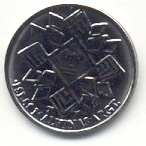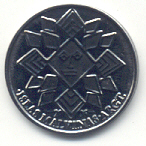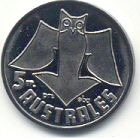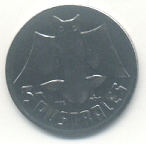 |
 |
| Islas Malvinas |
|
The Falkland Islands, also called the Malvinas, are
an archipelago in the South Atlantic Ocean, located 300 miles (483
kilometres) from the coast of South America, 671 miles (1080 km) west of
the Shag Rocks (South Georgia), and 584 miles (940 km) north of
Antarctica (Elephant Island). They consist of two main islands, East
Falkland and West Falkland, together with about 700 smaller islands.
Stanley, on East Falkland, is the capital and largest city. The islands
are a self-governing Overseas Territory of the United Kingdom, but have
been the subject of a claim to sovereignty by Argentina since the early
years of Argentina's independence from Spain in 1810. The islands are referred to in the English language as "[The] Falkland Islands". This name dates from an expedition led by John Strong in 1690, who named the islands after his patron, Anthony Cary, 5th Viscount Falkland. The Spanish name for the islands, "Islas Malvinas", is derived from the French name "Îles Malouines", bestowed in 1764 by Louis Antoine de Bougainville, after the mariners and fishermen from the Breton port of Saint-Malo who became the island's first known human settlers. In pursuit of this claim in 1982 the islands were invaded by Argentina, precipitating the two-month-long undeclared Falklands War between Argentina and the United Kingdom, which resulted in the defeat and withdrawal of Argentine forces. Since the war there has been strong economic growth in both fisheries and tourism. The inhabitants of the islands are British citizens. Many can trace their origins in the Islands back to the early nineteenth century. They reject the Argentine sovereignty claim with English and not Spanish being the language used on the islands. |
|||||||||||||||||||||||||||||||||||||||||||||||||||||||||||||
| As usual Mr. Zinkann has produced pattern / trial coins on the name of Islas Malvinas in various metals with 22 mm diameter with 1.5 mm thickness. Below are their details with mintage. | |||||||||||||||||||||||||||||||||||||||||||||||||||||||||||||
|
|||||||||||||||||||||||||||||||||||||||||||||||||||||||||||||
|
|
 |
||||||||||||||||||||||||||||||||||||||||||||||||||||||||||||
|
Information on Cobalt: Symbol: Co, Atomic Number: 27, Atomic mass: 58.933195 g/mol, Density: 8.90 g·cm−3, Melting Point: 1495 °C. Cobalt is a hard, lustrous, silver-gray metal, a chemical element with symbol Co. It is found in various ores, and is used in the preparation of magnetic, wear-resistant, and high-strength alloys. Its compounds are used in the production of inks, paints, and varnishes. |
|||||||||||||||||||||||||||||||||||||||||||||||||||||||||||||
|
|
 |
||||||||||||||||||||||||||||||||||||||||||||||||||||||||||||
|
Information on Hafnium: Symbol: Hf, Atomic Number: 72, Atomic mass: 178.49 g/mol, Density: 13.31 g·cm−3, Melting Point: 2233 °C. Hafnium is a corrosion-resistant, ductile metal with a silver-white color. Its properties are extremely close to those of Zr, with the exception that Hafnium is twice as dense. The metals are extremely difficult to separate due to their chemical similarities. The metal is used in control rods due to its ability to absorb neutrons. Hafnium will burn at elevated temperatures. |
|||||||||||||||||||||||||||||||||||||||||||||||||||||||||||||
|
|
 |
||||||||||||||||||||||||||||||||||||||||||||||||||||||||||||
|
Information on Rhenium: Symbol: Re, Atomic Number: 75, Atomic mass: 186.207 g/mol, Density: 21.02g·cm−3, Melting Point: 3186 °C. Rhenium was not discovered until 1925 and is one of the last naturally occurring elements to be discovered. Rhenium has the second highest melting point of any metal, at 3,180° C surpassed only by Tungsten. It is very dense. Rhenium is ductile over a much wider temperature range than most or all metals. The metal can be thermally cycled thousands of times with no ill effects. Rhenium is produced mainly as a by-product of the copper mining industry. The metal ignites at about 400° C and burns violently creating rhenium trioxide. Rhenium does not occur free in nature and is widely dispersed in the earth's crust. Annealed rhenium is very ductile, and can be bent, coiled, or rolled. Rhenium is widely used as filaments for mass spectrographs and ion gauges. Rhenium is also used as an electrical contact material because it has good wear resistance and withstands arc corrosion. Thermocouples made of Re-W are used for measuring temperatures up to 2200 °C. |
|||||||||||||||||||||||||||||||||||||||||||||||||||||||||||||
|
|
 |
||||||||||||||||||||||||||||||||||||||||||||||||||||||||||||
|
Information on Zirconium: Symbol: Zr, Atomic Number: 40, Atomic mass: 91.224 g/mol, Density: 6.52 g·cm−3, Melting Point: 1855 °C. A lustrous gray-white, strong transition metal that resembles titanium, zirconium is obtained chiefly from zircon and is very corrosion resistant. Zirconium is primarily used in nuclear reactors due to its resistance to corrosion and low neutron cross-section. |
|||||||||||||||||||||||||||||||||||||||||||||||||||||||||||||
| The Obverse of the coin depicts a Sun with a Face (Sol de Mayo) consisting of geometric polygons dividing the date below; the legend reads ISLAS MALVINAS * ARGT*. The Reverse of the coin depicts a Stylized Owl Facing with Wings outspread separating the word pru eba (Test or Trial.). The Edge is plain. The diameter of the coin is 22.00 mm diameter, with thickness 1.50 mm. I got my 5 Australes in Cobalt, Hafnium, Rhenium and Zirconium from Elizabeth Anne Zinkann (ezinkann@comcast.net). | |||||||||||||||||||||||||||||||||||||||||||||||||||||||||||||
| Micro-Nations | |||||||||||||||||||||||||||||||||||||||||||||||||||||||||||||
| Chiefa Coins | |||||||||||||||||||||||||||||||||||||||||||||||||||||||||||||



